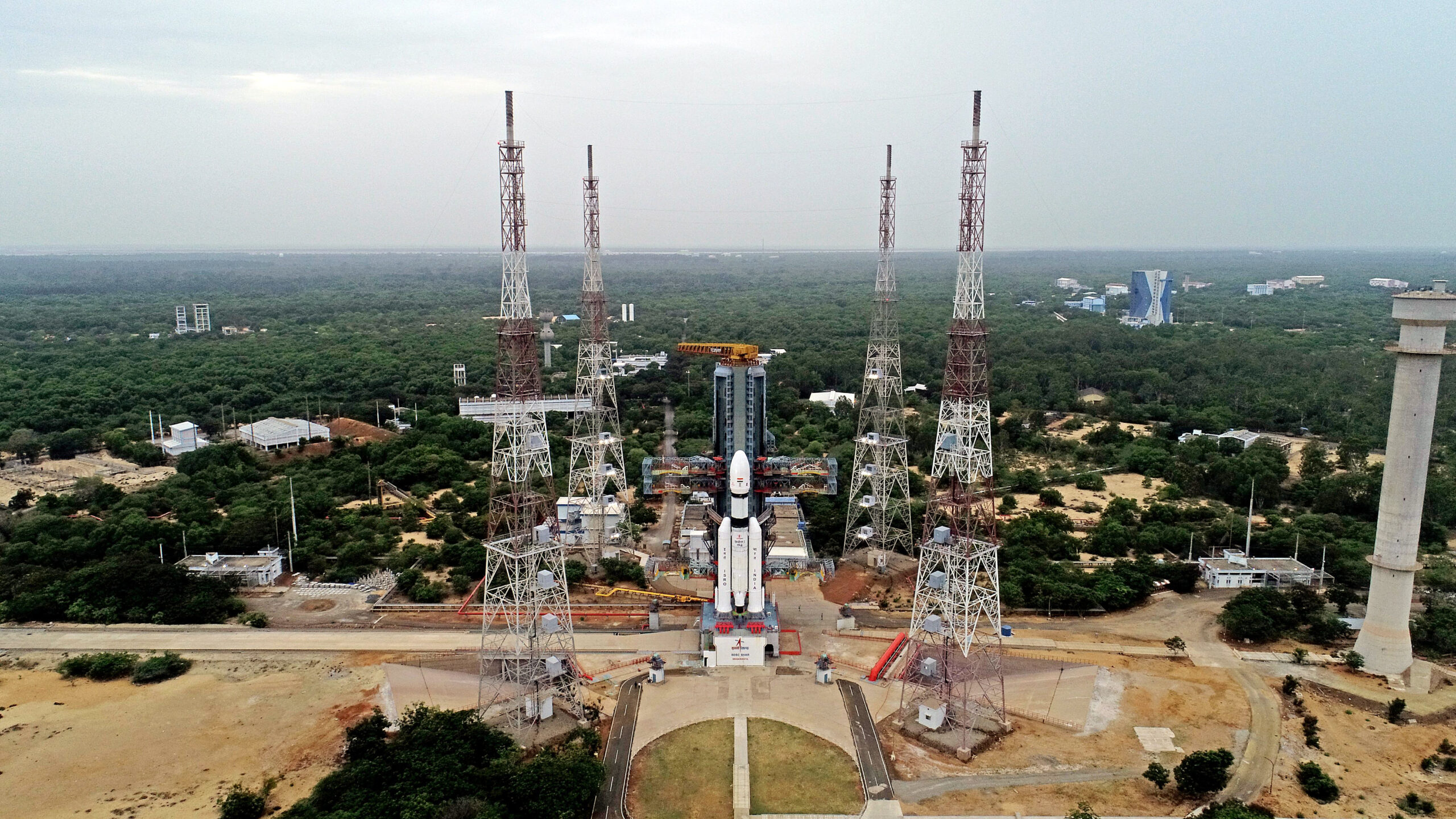
Four years after it shattered many people’s hearts, ISRO’s Chandrayaan is ready to launch on its third expedition to the moon on Friday in an effort to join a select group of countries that have successfully completed lunar missions with a soft landing.
Chandrayaan-3, a component of India’s ambitious moon mission, will launch on July 14 from this spaceport atop a “fat boy” LVM3-M4 rocket, according to the Indian Space Research Organisation. It is anticipated that the soft landing will take place in late August.
The ISRO crew was disappointed when Chandrayaan-2 failed to make the intended soft landing on the moon’s surface in 2019. Many people still clearly recall the images of Prime Minister Narendra Modi comforting the distraught K Sivan, who was the ISRO director at the time and present for the extraordinary achievement.
After putting up countless hours of effort, researchers at this location’s Satish Dhawan Space Centre are currently working to perfect the art of soft-landing on the moon’s surface. If the effort is successful, India would become the fourth nation after the United States, China, and the erstwhile Soviet Union to accomplish the feat.
The third lunar exploration mission, Chandrayaan-3, is prepared to launch on the LVM3 launcher’s fourth operational mission (M4). According to the space agency, ISRO is breaking new ground by roving on the lunar surface and soft-landing on the moon’s surface using its lunar module.
Future interplanetary missions are anticipated to benefit from the mission.
A lander module, rover, and an indigenous propulsion module make up the Chandrayaan-3 mission, which aims to develop and demonstrate new technologies needed for interplanetary missions.
The countdown for the launch is anticipated to start on Thursday with the 43.5 metre tall rocket set for the lift off from the second launch pad at pre-fixed time at 2.35 pm on July 14.
The largest and heaviest LVM3 rocket (formerly known as GSLV MkIII), affectionately referred to as “fat boy” by ISRO scientists for its heavylift capability, has successfully completed six flights in a row.
Three modules make up the LVM3 rocket: the propulsion, the lander, and the rover (which is stored inside the lander).
The fourth operational flight of LVM3, which will launch the Chandrayaan-3 spacecraft into a Geo Transfer Orbit on Friday, is the mission.
The LVM3 spacecraft has demonstrated its adaptability to carry out the most difficult missions, including interplanetary flights and the injection of many satellites. According to ISRO, it is also the biggest and heaviest launch vehicle transporting Indian and foreign customer satellites.
The Satish Dhawan Space Centre was humming with activity as the launch date drew closer as the launch vehicle was recently integrated into the launch mission complex at the second launch pad.
The ‘launch rehearsal’ at Sriharikota, which simulated the whole launch preparation and process and lasted more than 24 hours, was completed on Tuesday.
Scientists predict that 16 minutes after liftoff on Friday at 2:35 p.m., the propulsion module will separate from the rocket and begin an approximately 5- to 6-times elliptical orbit of the earth, with 170 km closest to the planet and 36,500 km furthest away, moving in the direction of the lunar orbit.
The difference between Chandrayaan-3 and its unsuccessful predecessor is that SHAPE, which stands for Spectro-polarimetry of HAbitable Planet Earth, is a payload on the propulsion module that will be used to examine Earth from lunar orbit.
According to ISRO, the SHAPE is an experimental payload used to investigate the Earth’s spectro-polarimetric fingerprints in the vicinity of infrared light.
The Propulsion Module’s primary job is to transport the Lander Module from launch vehicle injection orbit to lander separation in addition to carrying the SHAPE payload.
After touching down on the moon’s surface, the lander module carried several payloads, including RAMBHA-LP, which is designed to measure the near-surface plasma ions and electron density and its variations, ChaSTE Chandra’s Surface Thermo Physical Experiment, which measures the thermal characteristics of the lunar surface near the polar region, and ILSA (Instrument for Lunar Seismic Activity), which measures seismicity in the area of the landing site and delineates the lunar crust and man.
According to ISRO, the lunar rover, which has a mission life of 1 lunar day (14 Earth days), also carries the Laser Induced Breakdown Spectroscope (LIBS) to analyse the chemical makeup of the rocks and dirt around the lunar landing site.